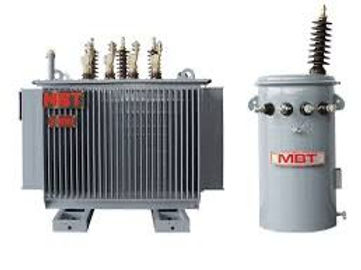
Our Supply
This is your Project Page. It's a great opportunity to help visitors understand the context and background of your latest work. Double click on the text box to start editing your content and make sure to add all the relevant details you want to share.

01
Inverter
Definition: An inverter is a power adjustment device composed of semiconductor devices, which is mainly used to convert DC power into AC power. In photovoltaic power generation systems, this device is usually called a "photovoltaic inverter."
Function: The photovoltaic inverter converts the variable DC voltage generated by solar photovoltaic modules into AC power of the mains frequency, which can be connected to the public grid transmission system or used for off-grid power grids. It is an indispensable part of the photovoltaic power generation system and is called the "brain" or "heart" of the photovoltaic power generation system.
02
Battery -Energy Storage
Energy storage equipment stores electric energy through specific technical means so that it can be released when the power grid is at peak load, power supply is insufficient or when there is a specific demand, thereby achieving the purpose of stabilizing the power grid, emergency backup power supply and utilizing surplus power.
Electricity storage equipment has a wide range of applications in many fields, including but not limited to:
Home field: Use solar panels to charge batteries to achieve self-use of home photovoltaic power generation and access to the Internet with surplus power.
Industrial field: Applied to UPS uninterruptible power supply, power system peak regulation, electric vehicle charging and other scenarios.
Data center: Enhance power supply reliability, prevent accidental power outages from causing data loss, and improve the economy and low-carbon energy saving of power operation.
Transportation field: Trains store electric energy through energy storage technology and release electric energy in non-contact network or emergency situations to ensure normal driving; new energy vehicle charging stations are also often equipped with energy storage systems to cope with charging peaks.
Communication field: Used as a backup power supply in communication facilities such as 5G base stations to improve system operation efficiency and reduce resource waste.
Hospitals and oil and gas companies: Ensure continuous and stable power supply to meet special needs.
Remote areas: Provide power support to remote areas through microgrid + energy storage.
Grid side: access the transmission network or distribution network for unified dispatching to achieve grid peak and frequency regulation and ensure grid stability.
.png)


03
Transformer
Function of transformer
Voltage conversion:
The most basic function of transformer is to convert voltage. By changing the ratio of the number of turns between the primary coil and the secondary coil (i.e., the transformation ratio), the AC voltage can be increased or decreased. This is particularly important in power systems because different equipment and occasions require different voltage levels.
Current conversion:
Due to the conservation of energy (in an ideal transformer, ignoring losses), when the voltage increases, the current will decrease accordingly; conversely, when the voltage decreases, the current will increase. Therefore, transformers can also be used for current conversion. This feature is particularly useful in power transmission and distribution because it allows high voltage and low current to be transmitted to reduce energy losses while converting to low voltage and high current at the end user to meet power demand.
Impedance conversion:
The transformer can also change the impedance of the circuit. In a circuit, impedance is a general term for resistance and reactance (including inductive reactance and capacitive reactance). Through the transformer, the impedance distribution in the circuit can be changed, which has an important impact on the stability and efficiency of the circuit.
Electrical isolation:
The transformer provides electrical isolation between the primary coil and the secondary coil. This means that with the transformer, there is no direct electrical connection between the two circuits, thus preventing direct current flow between the circuits. This feature is very important in protecting personal safety and equipment safety, especially when dealing with high voltage electricity.
Power Transmission:
Transformers can also be used to transmit electrical energy. Through transformers, electrical energy can be transmitted between circuits of different voltage levels, thus achieving long-distance transmission and distribution of electrical energy. This is essential for large-scale electrical energy transmission in modern power systems.
.png)

04
Cable

